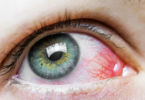The baby’s eyes open on the breast that receives it and the child discovers there the thread of light that binds him to life. To stimulate the vision of him is to integrate him into the world and strengthen the parental union.

The sense of sight is one of the least developed at birth. Hence the importance of stimulating a baby’s visual ability.
Children are born with difficulty focusing. However, in a few months of intense learning they will do well, through imitating movements, recognizing faces and interacting with them.
The baby is attracted to objects with high contrasts, with rounded shapes, movements and voices. Early stimulation gives him security by helping him position himself and recognize his caregivers. Visual communication comforts and links you.
Undoubtedly, stimulating it is necessary for reasons that we will explain. In the first year, the pace of cognitive experiences is dizzying.
What is the vision of a newborn like?
Newborns come into the world with the right vision to hold onto close and personal life. In the foreground they see the mother who, at about 20 or 30 centimeters, looks at them, smiles and breastfeeds. Further away, the blurred vision exempts them from understanding what is happening around them to focus only on what is close and vital.
The gaze of babies at birth is directed at the mother, at the rounded shape of her face, at the contrast of her eyes, at her high-pitched voice. Also to the darkened color of the areola. It is a first look that parentalizes.
The pediatrician Marc Pilliot, in the article “The newborn’s gaze”, refers to this as a protlook or founding gaze. A bridge to the life that begins. Due to the dark warmth of the belly left behind, babies do not like light. If they follow something with their eyes, they do it from the side, not from top to bottom. They look at the edges and not the center.

The gaze of the newborn baby on the mother during breastfeeding is classic and is part of her development.
Tips to stimulate baby’s visual development
In general, we should not force the child to do any activity. Learn exclusively by playing, in an atmosphere of harmony, joy and tranquility. If we notice him irritated, it is because he is having a hard time.
Early stimulation
From the womb, the mother has a close and intimate relationship. The fetus hears rumors and voices that she, at birth, she meets again. That excites him. Numerous investigations show that the prenatal relationship is crucial in the development of mother-baby affection.
Indeed, as soon as they open their eyes and the initial crossing of glances that founds the maternal relationship occurs, it is possible to stimulate the visual capacity of a baby. Smells and colors, plus the warmth and softness of the skin, dispose you from now on to begin the instinctive adventure of existence.
Strengthen contact
The mother-child visual relationship is intense and will be the common thread of the other stimuli. The relationships that the eye establishes with objects will mobilize the hands and the body.
Eye-hand coordination is structural and will determine advances in neurodevelopment. By the way, if the mother does not look at it when breastfeeding, the baby will lean forward trying to reestablish contact. If she doesn’t make it, she may she cry.
Another element that strengthens contact is the woman’s own training and enlightenment. In this regard, sensitive mothers have a greater propensity to adapt their behaviors to the stimulation, regulation and communication needs of their babies.
Encourage curiosity
There is no doubt that the engine of knowledge is curiosity. In the child it moves and moves the whole system of her learning.
The area that he visualizes, close and moving, narrows it to survival and protection. Biologically, he is attracted to faces, because it is the faces that he fixes the most.
Later, he is attracted by the luminous forms that reproduce sequences and organic rhythms. Attracting his curiosity, making him follow objects, making them appear and disappear, is part of training his ability to search and memorize. They are exercises that are part of the field of neuroplasticity.
Benefits of early visual stimulation
Visual acuity begins at about three months and increases up to six. Then, it is already close to the values of the visual field of adults, although from birth it is feasible to stimulate the visual capacity of a baby
A capital element in stimulation is the possible early detection of vision problems. In fact, they can be diagnosed before the year.
For example, in those under thirty days, it is possible to know if she fixes and follows her gaze on a moving object of interest. The exam will not be conclusive until the third month of life. But if the baby has this feature, she should be taken to the specialist.
Finally, stimulation generates body awareness, which is the basis for spatial awareness. This, in turn, is based on auditory and tactile development and haptic information at birth.

Colored mobiles stimulate young children with contrast.
Stimulating a baby’s visual ability: the sooner the better
In the 25th week of gestation, the fetus has 100 billion neurons, but only some are connected at birth. It is then, from birth to 3 years, that they will be integrated through networks and connections.
That is why early stimulation from the uterus with music therapy is so important up to 6 years of age. Adding exercises and games that activate their sensory, intellectual, motor, affective and social development is key. Voices and sounds, caresses, colors and movements are also elements that generate nerve connections in your brain.
In conclusion, sight is one of the senses that must begin to be stimulated as soon as possible. It must be borne in mind that it is in the first four months that the vision and the neurological circuit that corresponds to it develops.





